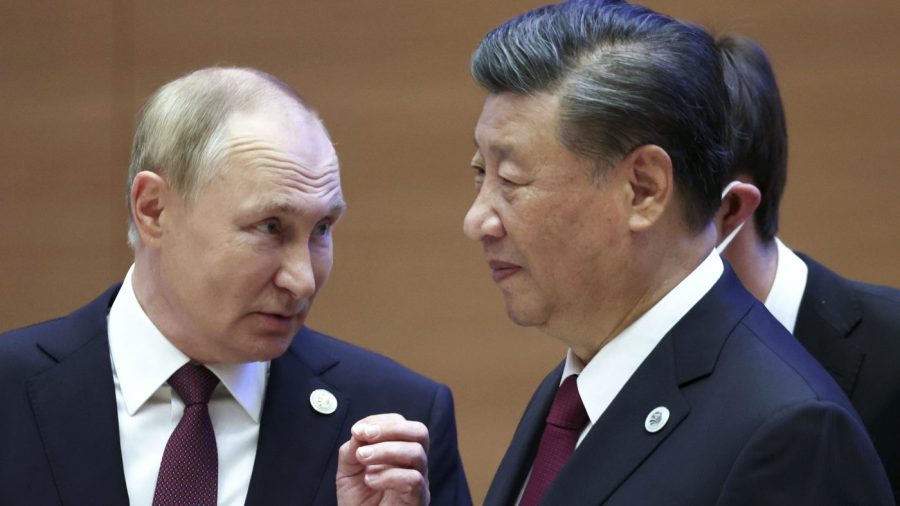As President-elect Donald Trump and his team prepare to take office, a major debate is taking place regarding the degree to which the U.S. should maintain its nearly 80-year military presence in Europe.
Many experts contend that the U.S. should focus primarily on deterring and, if necessary, defeating China in an East Asian conflict. The Europeans, they argue, should look after their own defenses, having sheltered for far too long under America’s defense umbrella.
Others point out that Russian President Vladimir Putin will remain a serious threat to America’s NATO allies for the foreseeable future, and that any Russian effort to swallow one or more of the smaller allies could drag the U.S. back into yet another major European war.
But even those who wish to focus solely on a possible conflict with China should recognize that Beijing has allies who almost certainly would come to its aid.
The war in Ukraine has demonstrated that the four-way axis of Russia, China, North Korea and Iran is very real. The latter three have all come to Russia’s aid, especially after its initial incursion faltered.
China has provided Moscow with both economic assistance and critical parts for its weapons systems. North Korea has sent Russia millions of rounds of artillery shells (artillery is the backbone of Russian operations) and, more recently, perhaps as many as 100,000 troops to help compensate for Russia’s more than a half million casualties. Iran for its part, has provided Russia with thousands of drones that have inflicted tremendous damage on Ukrainian civilian and military targets.
Should China and America go to war, there is every reason to expect that, just as Beijing and its two partners came to Russia’s aid, the three other members of the axis would do the same for China.
North Korea owes China. In November 1950, five months after the onset of the Korean War, China dispatched an initial 300,000 troops that helped Pyongyang drive American-led forces practically off the peninsula. By the time hostilities came to a close in 1953, China had sent 3 million men into the fight and lost 1 million of them. At a minimum, Pyongyang can be expected to send troops, artillery and other systems to bolster China’s capabilities. It could also divert American forces by firing ballistic missiles at the U.S., attacking the South, or doing both.
Russia could support China in a variety of ways. It could bolster China’s chemical and biological weapons arsenals. It could supplement China’s space and anti-satellite capabilities. Or it could mobilize more forces opposite NATO, or even attack a NATO ally, to distract American military planners and force them to hold in or deploy to Europe troops and systems otherwise meant for Asia.
As for Iran, it could ship its drones to China through Russia via either a Georgia that is friendly toward Moscow or across the Caspian Sea. In doing so it would avoid chokepoints that America and its allies might have seized at the onset of hostilities. Iran could also ramp up its support for the Houthis; it already provides the Yemeni group with weapons, training and intelligence support. The Houthis could then wreak even more havoc on Red Sea shipping than they have already done, forcing the Navy to increase its own defensive and offensive operations, thereby drawing down its limited supply of missiles and other ordnance that might be needed in East Asia.
A war with China would therefore not be a war with China alone. American planners must therefore ensure that each of Beijing’s allies will fear American reprisals if any one of them comes to China’s assistance. That in turn means that Washington should not pull its forces out of Europe and South Korea, to deter both a Russian attack on a NATO ally and/or a North Korean attack on the South and to tie down the forces of both to limit their assistance to China.
Similarly, whatever the new administration’s desire to reduce its presence in the Middle East, it will have to remain in the region to project sufficient power both to pressure Iran and to eliminate the Houthi threat to shipping.
There is much merit to the argument that the U.S. is unprepared for a two-front war with China and any one of its three partners. Yet even a war with China alone could bring its friends into play.
The new administration would do well to plan against such a scenario and retain forces in both Europe and the Middle East to prevent the four-way axis from working as one, as they are now doing against a beleaguered Ukraine.
Dov S. Zakheim is a senior adviser at the Center for Strategic and International Studies and vice chairman of the board for the Foreign Policy Research Institute. He was undersecretary of Defense (comptroller) and chief financial officer for the Department of Defense from 2001 to 2004 and a deputy undersecretary of Defense from 1985 to 1987.

